Lithium-ion batteries power the lives of millions of people every day. Due to its portability, high energy density, and charging capacity, this technology is becoming more and more commonplace in everything from laptops and cell phones to hybrids and electric vehicles.
There are several lithium ion battery types based on the material used in making the cathode or the anode. Let’s take a look at how lithium batteries function and learn more about the different types of lithium batteries.
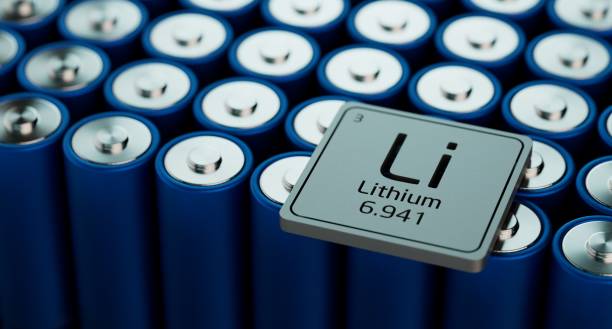
What Are Lithium Batteries And How Do They Work?
By establishing an electrical potential difference between the battery’s negative and positive poles, lithium batteries use lithium ions to store energy. The two sides of the battery are separated by an insulating layer known as a “separator,” which keeps the electrons out while letting the lithium ions pass through.
Lithium ions travel through the separator from the battery’s positive to its negative side during the charging process. The ions flow in the other direction as you deplete the battery. This is a brief overview of how lithium batteries work. The following parts will also explain the working principle of lithium batteries in more detail.
What Are the Components of Lithium Batteries
A lithium battery is made up of four essential parts. It has a cathode, which controls the battery’s capacity and voltage and is where the lithium ions are produced. An external circuit can be powered by electricity thanks to the anode, which also stores lithium ions during a battery charge.
Between the cathode and anode, the electrolyte, composed of salts, solvents, and additives, transports lithium ions. The separator is the last component, a physical barrier separating the cathode and anode.
How Does A Lithium Battery Work
It can be very straightforward to explain how lithium batteries work. The maximum charge density of any comparable system can be found in a lithium battery. As a result, they can provide you with a ton of energy without being overly burdensome.
This is due to two factors. First of all, the most electropositive element is lithium. The ability of an element to readily transfer electrons to form positive ions is known as electropositivity. In other words, it measures how easily an element can produce energy. As lithium readily loses electrons, it can generate a lot of energy with ease.
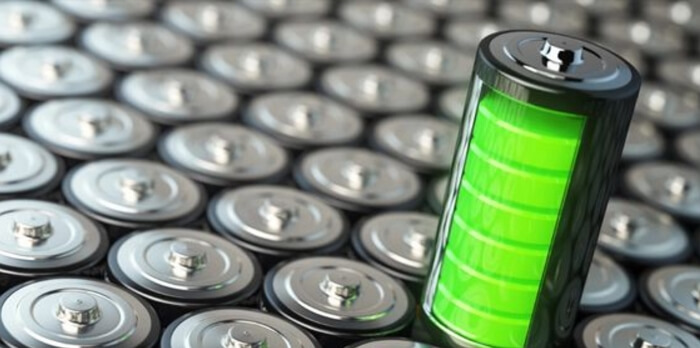
Positively charged lithium ions (Li+) flow from the negative anode to the positive cathode when an appliance, such as a recreational vehicle, is powered by its lithium-ion battery. To achieve this, they move through the electrolyte until they come in contact with the positive electrode. They are left behind there.
On the other hand, the electrons travel from the anode to the cathode. A lithium-ion battery undergoes the exact opposite process when it is charged. From the cathode to the anode, the lithium ions return. From the anode to the cathode, electrons flow.
In the following parts, six kinds of common lithium batteries will be introduced in detail. Various aspects of these types of lithium batteries will be mentioned, including their pros, and cons, as well as their main applications.
Lithium Battery Types 1: Lithium Iron Phosphate Battery
LiFePO4, also known as “LFP,” is the chemical name for lithium iron phosphate. LFP is one of the safest and most stable cathode materials available for lithium-ion batteries and offers good electrochemical performance, low resistance, stability, and safety.
LFP is a member of the Li-Ion battery family, which includes various battery compositions with cathode names. Lithium-ion (Li-Ion) batteries are a rechargeable battery type. Today’s electric automobiles, light EVs, mobile phones, laptops, and other common things all have them.
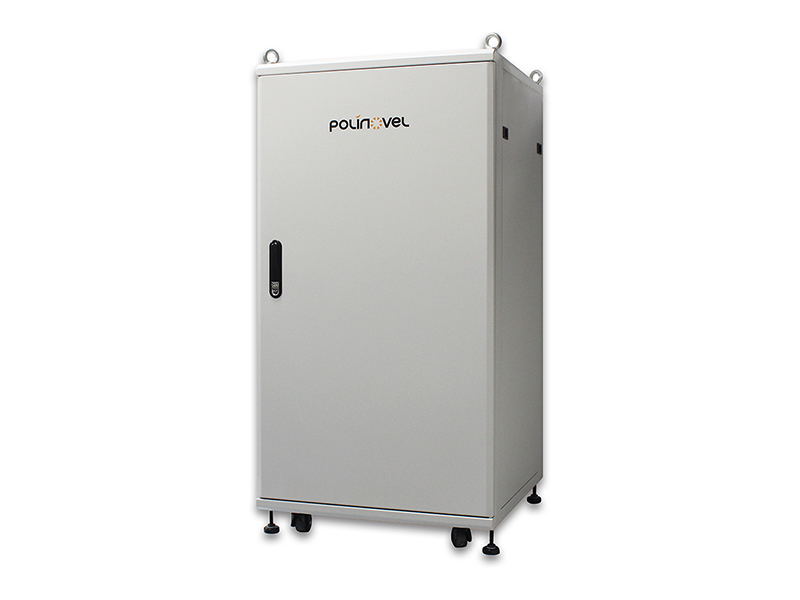
The Pros of Lithium Iron Phosphate Batteries
- ● Durability, a long life cycle, and safety are the main advantages.
- ● Unlike lead-acid batteries, the longevity of LFP batteries is not significantly impacted by the depth of discharge. Most LFP manufacturers rate their batteries at a depth of discharge of 80%, and some even let 100% discharge without the battery being harmed.
- ● Lithium iron phosphate batteries are naturally safe and extremely stable due to the low resistance of the materials used in their construction.
- ● Even when fully charged, LFP batteries are among the safest lithium battery solutions because of their low thermal runaway threshold of 518 degrees Fahrenheit.
The Cons of Lithium Iron Phosphate Batteries
- ● The first is that they have a relatively low specific energy compared to other lithium battery types.
- ● Low temperatures can also have an impact on their performance. LFP batteries may not be a good fit in some high-ranking applications because of their low specific energy and decreased performance in cold conditions.
Main Applications of Lithium Iron Phosphate Batteries
Due to their advantages in terms of safety and affordability, lithium iron phosphate batteries are frequently used in passenger cars, buses, logistics vehicles, low-speed electric vehicles, etc. In addition to their application on large vehicles, lithium iron phosphate batteries are also common in the light EV industry.
The starting lithium iron phosphate battery provides instantaneous high-power output capabilities in addition to the properties of a lithium-ion battery for power. The conventional starter motor and generator are replaced with a BSG motor, and the conventional lead-acid battery is replaced with a potent lithium battery with an energy of less than one kilowatt-hour.
High working voltage, high energy density, extended cycle life, low self-discharge rate, no memory effect, and environmental preservation are only a few of the distinctive benefits of lithium iron phosphate batteries. It is excellent for large-scale electric energy storage and additionally offers stepless expansion.
Note: If you are interested in high-quality lithium batteries wholesale or lithium batteries customization, don’t miss Polinovel. As a reliable Chinese lithium batteries manufacturer, Polinovel is able to offer you a full set of customized services according to your need. >> Click to Learn More About Polinovel.
Lithium Ion Battery Types 2: Lithium Titanate Battery
Lithium titanate batteries use lithium titanate anode materials in their batteries. For example, it can be utilized as the anode for a 1.5 V lithium secondary battery made of lithium metal or lithium alloy.
Materials made of lithium titanate (LTO) are utilized as anode materials in batteries. Due to their unique properties, materials and electrolytes easily interact during charging and discharging cycle reactions to create gas. Typical lithium titanate batteries easily bilge gas, causing the batteries to bulge and significantly reducing performance.
However, lithium titanate batteries have a wider operating temperature range, and this characteristic makes them suitable for many special applications.
The Pros of Lithium Titanate Batteries
- ● Lithium titanate has a more significant potential than pure lithium, and it is more challenging to create than pure lithium crystal.
- ● Lithium titanate batteries have a constant discharge voltage, which increases the safety of this type of battery.
- ● Lithium titanate batteries underwent third-party testing. The results revealed that they are far more secure than conventional lithium batteries in extrusion, short circuits, and other severe tests.
- ● The lithium-ion diffusion coefficient and high rate charge and discharge of lithium titanium oxide batteries are higher. While significantly reducing charging time, there is little effect on cycle life, thermal stability, and strength.
The Cons of Lithium Titanate Batteries
- ● They provide poor energy density, implying that compared to other lithium technologies, they store less energy per unit of weight.
- ● Lithium titanate batteries are also quite pricey.
Main Applications of Lithium Titanate Batteries
They employ it in various applications, including forklifts, UPS, electric trains, solar-powered street lighting, and quick charging stations. Aerospace and military use, the development of smart grids, and the storage of wind and solar energy are further possibilities for LTO batteries. LTO battery anodes have recently been tested for applications for EVs, HEVs, Energy Storage Systems (ESS), and supercapacitors.
Li Ion Battery Types 3: Lithium Cobalt Oxide Battery
In 1991, lithium cobalt oxide (LCO) was developed. The anode of a lithium cobalt oxide battery is made of LiaC6, its cathode is made of LibCoO2, and its carrier is made of Li+. This type of lithium battery is utilized in various portable products, including all laptop and phone batteries and electrical equipment.
Although all those lithium cobalt oxide batteries have a low specific power, lithium cobalt oxide (LCO) batteries have a high specific energy. This indicates they can deliver power for a considerable time but struggle in high-load applications.
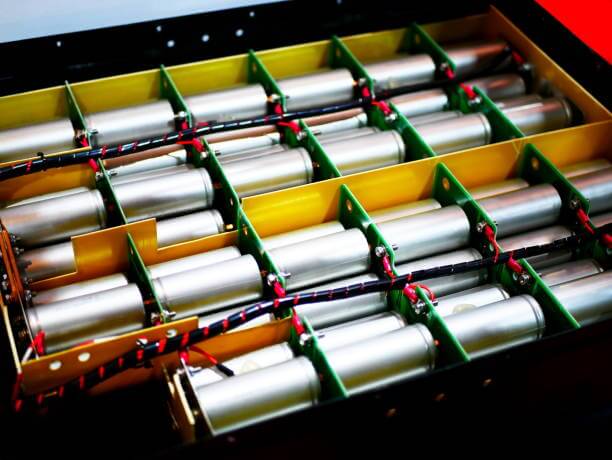
The Pros of Lithium Cobalt Oxide Batteries
- ● The high density of energy.
- ● The long runtime makes it ideal for cutting-edge technologies.
The Cons of Lithium Cobalt Oxide Batteries
- ● High load can cause the pack to overheat because it has a comparatively low discharge current.
- ● The LCO battery’s safety circuit is usually restricted to 1C for charging and discharging.
- ● Cycling and aging result in an increase in internal resistance of lithium cobalt oxide batteries. After a few years of usage, this high internal resistance may render the battery unusable due to a significant voltage drop under load.
Main Applications of Lithium Cobalt Oxide Batteries
Small portable electronics like cameras, tablets, computers, and phones frequently use LCO batteries for power supply. However, due to the cost of cobalt and worries about safety, they are losing ground to other varieties of lithium batteries in terms of popularity.
The lithium-ion battery is currently the most widely used technology in the industry. Lithium-ion batteries outperform other battery types in terms of energy, power density, and cycle capabilities.
Some characteristics of lithium cobalt oxide batteries are crucial for usage in contemporary applications, including energy storage systems employed in renewable energy applications, electric and hybrid automobiles, and, most critically, energy applications.
Types of Li Ion Batteries 4: Lithium Manganese Oxide Battery
Other names for lithium manganese oxide batteries include lithium manganate, lithium-ion manganese, li-manganese, and manganese spinel batteries. This type of battery’s technology was first uncovered in the 1980s, with the first article appearing in the Materials Research Bulletin in 1983. The first commercial lithium-ion cells were created by Moli Energy in 1996 utilizing lithium manganese oxide as the cathode material.
Lithium manganese oxide batteries are safer than other lithium-ion battery types and stand out from the competition thanks to their high-temperature stability. They can be used in power tools, electric motorbikes, and other applications and are widely found in medical equipment and devices.
This kind of lithium battery known as a lithium manganese oxide (LiMnO2), and it employs manganese as its cathode and lithium as its anode. For better ion flow, the battery is designed as a spinel. The “organic solvent” needed to bridge the current flowing between the anode and the cathode is lithium salt, which is included in the mixture.
The Pros of Lithium Manganese Oxide Batteries
- ● LMO batteries have high specific power and charge quickly. They can therefore deliver more current than, say, LCO batteries. Additionally, compared to LCO batteries, they have improved thermal stability, allowing for safer operation at higher temperatures.
- ● Low internal battery resistance and high rate capability enable quick charging and high current discharging.
- ● The lithium manganese oxide batteries are frequently employed in the security department because they have a lifespan of ten years, making it dependable in the long run.
- ● The discharge rate of this battery is as low as 0.5% annually when stored with a steady discharge capacity.
- ● Its high-temperature tolerance ranges from -40°F to 140°F.
The Cons of Lithium Manganese Oxide Batteries
- ● LMO batteries typically have a lifespan of 300–700 charge cycles compared to other lithium battery types.
- ● Lithium manganese oxide batteries have a lower capacity than the cobalt-based system.
Main Applications of Lithium Manganese Oxide Batteries
Portable power tools, medical equipment, and some hybrid and electric cars frequently use LMO batteries. Although this kind of batteries is useful, a lot of attention need to be paid when utilizing them. For insatcne, the exposure to ultrasonic waves and water should be avoided, as it may exert a negative influence on the performance of lithium manganese oxide batteries.
Lithium manganese oxide is used as the cathode material in lithium manganese oxide (LMO) batteries. This chemical produces a three-dimensional structure that enhances thermal stability and safety while enhancing ion flow, decreasing internal resistance, and increasing current handling. Electrified vehicles and laptops can also use LMO batteries.
Lithium Battery Types 5: Lithium Nickel Manganese Cobalt Oxide Battery
A family of electrode materials called lithium nickel manganese cobalt oxide (NMC) can be utilized to make lithium-ion batteries. Anode, cathode, and electrolyte make up lithium-ion batteries, which operate on a charge-discharge cycle. These materials make it possible to create more environmentally friendly and long-lasting batteries that store electrical energy.
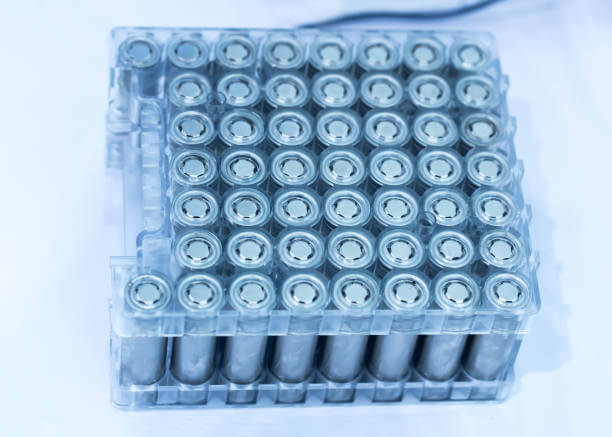
Nickel and manganese lithium Cobalt Oxide batteries, also called NMC batteries, are made of a wide range of components common to lithium-ion batteries. Included is a cathode combination of nickel, manganese, and cobalt. NMC batteries can have a high specific energy density or a high specific power, just like other lithium-ion battery types. But they cannot possess both characteristics. The power tool and auto powertrain industries use this battery the most frequently.
The Pros of Lithium Nickel Manganese Cobalt Oxide Batteries
- ● High energy density and a longer lifecycle at a lower price than cobalt-based batteries are advantages of NMC batteries.
- ● They are generally safer since they have excellent thermal stability than LCO batteries.
The Cons of Lithium Nickel Manganese Cobalt Oxide Batteries
- ● The fact that NMC batteries have a little lower voltage than cobalt-based batteries is their main flaw.
Main Applications of Lithium Nickel Manganese Cobalt Oxide Batteries
The typical cathode combination ratios are 60% nickel, 20% manganese, and 20% cobalt. As cobalt may be reasonably expensive, this means that the cost of the raw material is cheaper than for other lithium-ion battery alternatives.
The cost of these batteries may decrease even further as some manufacturers plan to change their battery chemistry to one that uses more nickel and less cobalt. This battery type is frequently utilized in electric vehicles.
With each charge and discharge, the anode expands and contracts, rendering the cell mechanically unstable. Due to its drawback of expanding and contracting with charge and discharge, silicon added to graphite causes mechanical instability in the cell.
NMC owes its functionality to the combination of nickel and manganese. Manganese has the advantage of creating a spinel structure to produce low internal resistance and nickel is unstable, despite having enormous specific energy. But, when combined together, the strengths of the metals are increased.
Lithium Ion Battery Types 6: Lithium Nickel Cobalt Aluminum Oxide Battery
Lithium nickel cobalt aluminum oxide batteries, sometimes known as NCA batteries, are finding use in grid storage and electric vehicles. Although NCA batteries aren’t frequently used in consumer gadgets, the automotive sector has enormous potential for them. Although NCA batteries are more expensive and less safe than other lithium-ion batteries, they provide a high-energy option with a long lifespan.
Monitoring systems must be used with NCA batteries to guarantee driver safety. The demand for these batteries may rise as the number of electric vehicles rises, given the extensive use of NCA batteries in electric vehicles.
The Pros of Lithium Nickel Cobalt Aluminum Oxide Batteries
- ● NCA batteries’ significant advantages are high energy and a good lifespan.
The Cons of Lithium Nickel Cobalt Aluminum Oxide Batteries
- ● Batteries using NCA technology are more expensive and less secure than those using the majority of other lithium technologies.
Main Applications of Lithium Nickel Cobalt Aluminum Oxide Batteries
Currently, NCAs are used for a variety of specialized purposes. They consist of lithium nickel cobalt aluminum oxide batteries. It has a high specific energy, decent specific power, and long life duration, which parallels NMC.
Although the cost and safety of NCA are less appealing, those batteries are preferred in the market for electric vehicles because of their long battery life and capacity to operate in high-load applications. Tesla favors using NCA batteries in particular.
Trustworthy Supplier of High-quality Lithium Batteries
In Shenzhen, China, Polinovel is a cutting-edge lithium battery company that integrates design, development, manufacture, and sales. Polinovel offers distributors and exporters durable and secure lithium battery solutions for industrial and residential usage.

They are dedicated to offering expert, secure, and dependable lithium batteries that power a variety of applications with excellent performance, the most energy possible, and a long lifespan. They truly believe that the best strategy for achieving long-term win-win cooperation is to offer consumers high-quality goods and services that will help them prosper. When you work with Polinovel, you get more than simply dependable batteries.
Conclusion
The most widely utilized rechargeable chemical in batteries today is lithium-ion. The gadgets we use daily, such as electric cars and mobile phones, are powered by lithium-ion batteries. There are many types of lithium ion batteries which find a wide variety of uses across several industries. It is necessary to be cognizant of quality suppliers who will help your business with stocking up on all the various types of batteries in order to properly assist your customers.
Polinovel Lithium-ion batteries comprise a protective circuit board and one or more lithium-ion cells. Once the cell, or cells, are inserted inside a device with the protective circuit board, they are referred to as batteries. As you can see, there are numerous variations on the lithium battery. Each one has advantages and disadvantages and different applications where they thrive. Which lithium battery type is appropriate for you depends on your application, price, safety tolerance, and power needs. Contact Polinovel for more information on the matter.

